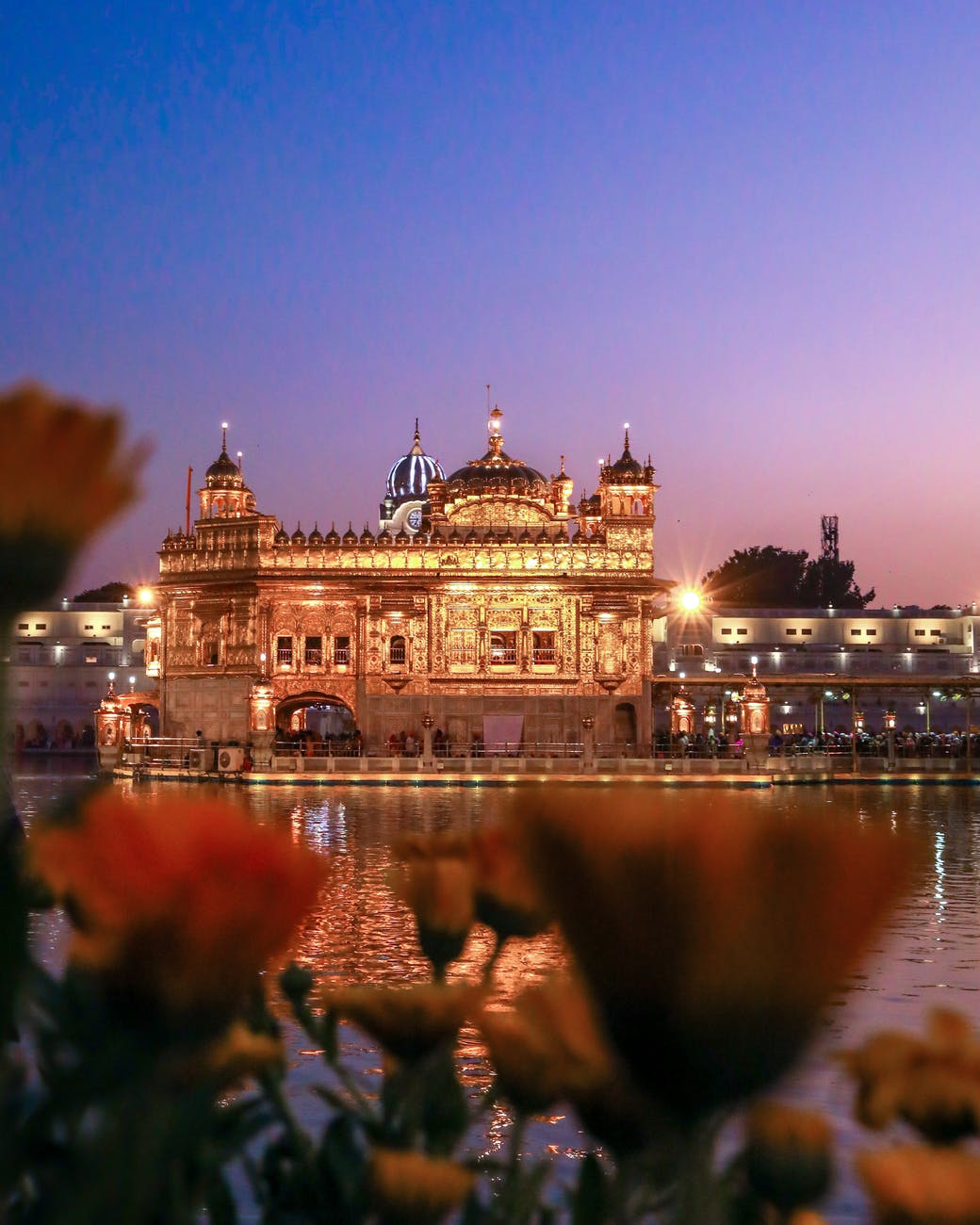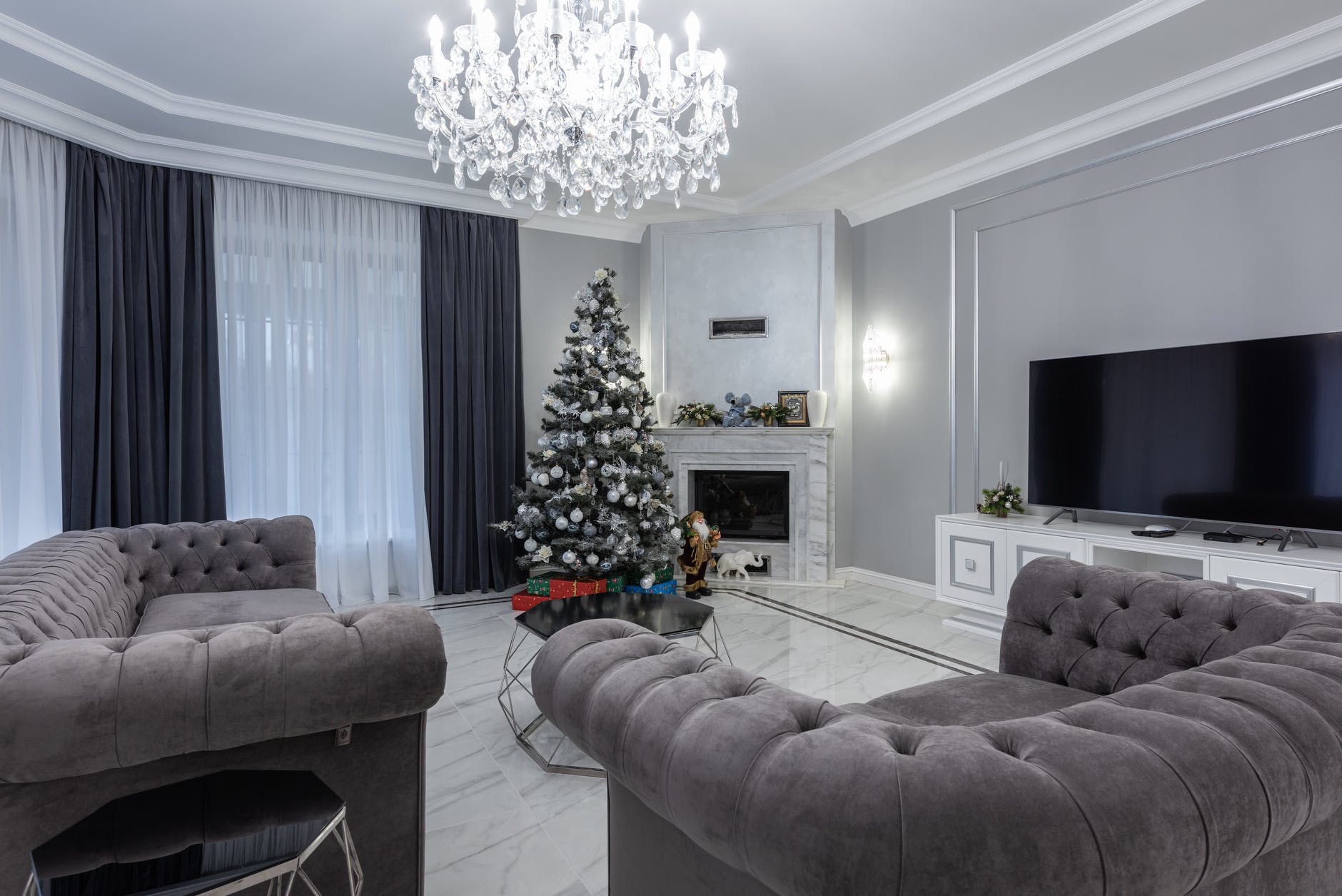A house is a building that people, usually one family live in. For most people a decent sized house is more than enough. Homes are definitely the most cherished possessions of a human being. Houses ensure a comfortable life and partly because they are the main ways to show the social status of their inhabitants. In modern and competitive world, status is important for some people of today’s high society. Some of the world’s biggest houses are owned by royal families, while others are privately owned. Grand, stylish and full of tech, these are The Top 10 Biggest Houses in The World now.
- Istana Nurul Iman Palace(Brunei 2.15 million square feet)

The Istana Nurul Iman is the official residence of the Sultan of Brunei, Hassanal Bolkiah, and the seat of the Brunei government. This palace is located on a leafy, riverside sprawl of hills on the banks of the Brunei River, a few kilometres southwest of Bandar Seri Begawan, Brunei’s capital city. The name “Istana Nurul Iman” is taken from Malay Istana and Arabic Nur-ol Imaan and means Palace of the Light of Faith. The official residence of the Sultan of Brunei, Hassanal Bolkiah, Istana Nurul Iman Palace is by far the world’s biggest home with its 2.15 million square feet of space. This palace has more than 1,788 rooms and 257 bathrooms, a 110 car garage, horse stables, banquet hall, swimming pools and even a mosque that can gather 1,500 people, the palace is sure to impress a lot of people. It was designed in 1984 by Leandro V. Locsin and constructed by the Filipino firm, Ayala International. The cost of such a mesmerizing home is $1.4 billion.
The construction was handled by Ayala Abbott and Butters, a UK construction firm, and completed in 1984. The palace is also used for all the state functions of the government of Brunei. The palace is not open to the public except on the annual Islamic celebration of Eid-ul-Fitr (the festival at the end of the Muslim fasting month) when the palace receives about 110,000 visitors over a three-day period. Curved roofs of the buildings and the huge golden dome of the palace mosque rise over green trees. Istana Nurul Iman was included in the Guinness Book of Records as the world’s largest living residence of a state head.
- Antilia(Mumbai, India 400,000 square feet)
Antilia is the second largest house in the world. The Indian pharmaceutical magnate Mukesh Ambani is the owner of Antilla, a 27 story 550 foot tall building in the heart of Mumbai, India. Mukesh Ambani moved to this house with his family in 2012. It has a 168-car garage, a ballroom, a 50-seat theatre, terrace gardens, 9 high speed elevators, swimming pool, spa, health centre, a temple, an ice-cream parlour, and a snow room that spits out snowflakes from the walls, the skyscraper-mansion is one of world’s largest and most elaborate private homes. Mukesh Ambani’s Antilia was designed by Chicago-based architects Perkins and Will, with the Australian-based construction company Leighton Holdings has taken charge of its construction. Antilia can survive an earthquake of 8 on the Richter scale. The architectural design of Antilia has been fashioned along the lines of the lotus and the sun. Antilia Has 6 Floors for Car Parking.
A total surface of 400,000 sq ft, it’s the second largest private residence in the world right now and took over $1- 2 billion to be constructed. But that probably wasn’t too much for the owner, who is India’s richest man after all, with a net worth exceeding $30 billion. The building boasts a unique architecture, with each floor designed differently and using different materials. The entire building was constructed with Vastu shastra as the central philosophy in mind, which is a traditional Hindu art of building houses. Every floor has its own purpose, from car garages to gym’s and indoor pools and even a 3 helipads on top. It is deemed to be the world’s second most valuable residential property, after British crown property Buckingham Palace, and the world’s most valuable private residence in 2020.
- Biltmore Estate – Asheville(North Carolina 178,926 square feet)

George Vanderbilt first visits Asheville, North Carolina in 1887. He considers the area as a possible location for his country home. A second visit to the Blue Ridge Mountains with his mother in 1888 continues to spark Vanderbilt’s imagination. He begins purchasing land for what will become Biltmore. Vanderbilt’s 250-room French Renaissance chateau is a true marvel, the largest undertaking in residential architecture. Over a six-year period, an entire community of craftsmen comes together to create America’s premier home and the environmental wonderland that surrounds it. The finished home contains over four acres of floor space, including more than 250 rooms, 35 bedrooms, 43 bathrooms, and 65 fireplaces.
It also includes a bowling alley, a 23,000 book library and a huge indoor swimming pool and all the modern amenities you can dream of and you’ve got one of the best houses in the world. In 1895, its architecture completes the beauty of the mountainous landscape in the area. Cornelia and John Cecil open Biltmore House to the public. Cecil responded to requests to increase area tourism during the depression, and to generate income to preserve the estate. William Amherst Vanderbilt Cecil returns to Biltmore. 1930, it was open to the public, offering accommodation in its Village Hotel or the property’s four star Inn, plus gourmet foods etc. Owned by the railroad and shipping magnate Cornelius Vanderbilt, Biltmore Estate’s main house has a chateau-like charm.
- Safra Mansion(Sao Paulo, Brazil 117,000 square feet)

Joseph Safra is the richest banker in the world and incidentally, the name Safra means yellow, or gold, in Arabic. Joseph Safra became the world’s richest banker by transforming a Brazilian lender into a global multibillion-dollar empire. Safra Mansion is built by Lily Safra and her husband Edmund. Both of them were well-known bankers who died in a suspected fire in their mansion in Monaco in 1999. Located in Sao Paulo, Brazil, the Safra Mansion reminds a little bit of the Villa Leopolda in the French Riviera. The Safra Mansion is an enormous 117,000 sq ft estate boasting more than 130 rooms, indoor and outdoor pools and it’s surrounded by a high wall.
The Safras held large parties at the villa. Notorious for their stable yet clandestine banking operations, the mysterious Safra family continues today as a fortress of banking successes. Safra’s importance in the financial system is smaller today than it once was. Other banks outgrew it,” said Rafael Schiozer, a professor of Finance at Fundacao Getulio Vargas. What’s inside Mansion is not known to many, because the Safra family members like to keep to themselves. They are known to have several super expensive properties around the world.
- Witanhurst(London, England 90,000 square feet)
The 90,000 sq ft estate comprises of all the modern amenities one could wish for, such as a swimming pool with sauna room and gym, a movie theater, massage parlor and plenty of parking space. Owner is the Russian billionaire Andrey Guryev, who bought it in 2008 for nearly $64 million. It was built between 1913 and 1920. The mansion has 65 rooms spread across three floors, including 25 bedrooms. One of the largest is the ballroom, measuring 70 feet (21 m) long with a height of 20 feet (6.1 m). It was designed by architect George Hubbard, incorporating part of the former Parkfield estate that stood on the massive property.
Some rooms are the Drawing Room, Study, Entrance Hall and staircase, and most of the bedrooms are all in an opulent classical style. Other richly decorated rooms include the Dining Room, Chinese Room, Billiard Room, and the Gallery hallway. Witanhurst was bought by the family of the Russian billionaire Andrey Guryev through an offshore company called Safran Holdings, located in the tax haven of the British Virgin Islands for £50 million in 2008. Witanhurst is the second largest residential estate in London after the Buckingham Palace. Witanhurst is a large Grade 2 listed 1930s Georgian Revival mansion located on 5 acres (2.0 ha) in Highgate, north London.
- Modern Versailles(Windermere, Florida 90,000 square feet)
Versailles is an 85,000 square-foot house belonging to Westgate Resorts founder David Siegel and his wife Jackie Siegel. Versailles situated in Orange County, Florida, the Versailles mega mansion belongs to Jaqueline and David Siegel. The huge estate was so long under construction that at some point, the couple went close to losing the immense house. Construction began in 2004 and stalled in 2009 with 60% completed as Siegel’s company encountered financial difficulties. The house was subsequently listed for sale at $65 million. With Westgate Resorts’ improved finances as of 2013, Siegel owned the property outright and construction has resumed and completion date was 2019. It was constructed on a man-made hill on 10 acres of lakefront property.
With a 8,000 sq ft master bedroom and over 30 bathrooms, 15 bedrooms, a ballroom with a 500 to a 1,000 person capacity, 11 kitchens, a two-story movie theater with a balcony inspired by the Paris Opera House, a 20,000-bottle wine cellar, an exotic-fish aquarium two tennis courts, two lane commercial grade bowling alley, a baseball diamond, a formal outdoor garden, and an elevator in the master bedroom closet and 6 swimming pools, the behemoth drew a lot of attention and was featured on several documentaries, the most famous one being The Queen of Versailles. Doors and windows are constructed using some of the last remaining, legal Brazilian mahogany at a cost of $4 million.
- La Reverie – Palm Beach(Florida 84,626 square feet)
La Reverie is the seventh largest house in the world. Purchased for a modest $4.5 million back in 1995, La Reverie is the largest celebrity residence in Palm Beach, Florida. It looks a bit like a house rendering, it’s pretty massive. La Reverie was built by Sydell Miller, the owner of Matrix Essentials hair product company. The location couldn’t have been better, since Palm Beach attracts all the rich and famous. At $105 million, the sale is likely the highest-dollar single-buyer/single seller residential deal ever to close in Florida and the most expensive ever in Palm Beach County.
Beyond comfortable living, its current owners also use it also to host charity events and concerts. Hedge fund billionaire Steven Schonfeld and his wife bought a sprawling Palm Beach estate for $111 million. The 6-acre estate, sold by hair-care mogul Sydell Miller, has more than 70,000 square feet of living space, with 11 bedrooms, 22 bathrooms, a bowling alley, salon, spa, ice cream stand and candy parlor. La Reverie stretches from the ocean to the Intracoastal Waterway, with 350 feet of beachfront and 233 feet on the waterway.
- Villa Leopolda(The French Riviera 80,000 square feet)
Constructed between 1929 and 1931 by the American architect Ogden Codman Jr. and belonging to the Brazilian billionaire Lily Safra until 2008 when she finally sold it to a Russian oligarch, Villa Leopolda is a history book in itself. Situated in the French Riviera, it first belonged to King Leopold II of Belgium who built it as a gift for his mistress Blanche Zélia Joséphine Delacroix. The 80,000 sq ft property was even used as a military hospital during the arduous World War I. Now a days, the huge villa is thought to be among the most expensive Europe homes, evaluated at around a little more than $500 million. The property boasts two guest houses with a total of 11 bedrooms and 14 bathrooms, immense gardens and probably the best beach front on the whole continent.
The villa has had several notable owners including Gianni and Marella Agnelli, Izaak and Dorothy J. Killam, and, since 1987. Leopold had made the previous estate a present for his mistress Blanche Zélia Joséphine Delacroix, also known as Caroline Lacroix, and it derives its name from him. Codman’s extensive designs and construction gave the estate, once a series of unrelated buildings, its current appearance. His neo-Palladian vision, coupled with his in-depth knowledge of historical precedent, resulted in the construction of a spectacular villa with extensive gardens and landscaping. Floor plans, letters, records, and stereo glass-plate views of the newly completed property still exist in the collections of the Society for the Preservation of New England Antiquities.
- The One – Bel-Air(California 74,000 square feet)
Imagined and built by film producer and real estate developer Nile Niami, the 74,000 sq ft property in Bel Air, California, nicknamed “The One”, will. When it was finished it was the most expensive house in America. New Modern Masterpiece that raises the bar for ultimate luxury, located through the Bel Air West Gate. The panoramic windows of this architectural home offer commanding views of the Bel Air golf course & the City beyond. Lavish designer kitchen with an attached chef kitchen plus a 5,600 sq ft master suite including a spa, 12 bedroom suites, 23 baths within this 31,000 sq ft home with another 40,000 sq ft of covered patios. 5 fully appointed bars, two lane bowling alley, theater, wine cellar, game room, private staff quarters, sports court, pavilion, pool cabana, infinity pool waterfall spa, putting green with 50 ft fire feature, motor ct 60 car parking and 14 car custom garage.
It is fully automated Creston system in 2018. The most expensive residential sale in the United Kingdom when Hong Kong real estate developer Cheung Chung Kiu purchased a mansion in London for a whopping $262 million. A sale that high had never taken place in the UK nor the United States prior to this. “The One” is a mega mansion in Bel-Air, California, that is just about ready to go on the market for $500 million, reports Bloomberg. This property has been in the making for the last seven years by ex-movie producer turned mega mansion developer, Nile Niami. Not only will “The One” break history for its lofty price tag, but also for its size. “The One” is America’s largest private residence. This 100,000 square foot estate has a movie theater with 36 seats, a bowling alley, an auto gallery that can fit 30 cars. It boasts 20 bedrooms, 30 bathrooms, and five swimming pools. The property is currently being represented by The Society Group agency.
- Pensmore – Highlandville(Missouri 72,215 square feet)
Steven Huff is an astrophysicist and former CIA officer and his planned for the huge mansion that to proved that a house can be with a difference than most would expect. Pensmore is one of the largest homes in the United States located in the Ozark Mountains near Highlandville, Missouri, that spreaded more than 72,000 square feet (6,700 m2), reached five stories, contains 14 baths, 13 bedrooms, has exterior walls 12 inches thick, and was designed to survive earthquakes, tornadoes, and bomb blasts. Steven T. Huff, telling The Kansas City Star, in 2015, that “the house should stand for 2,000 years”.
In 2008, the Steven T. Huff Family insulated concrete form structure designed to showcase sustainable construction techniques on a large scale, with it being designed to be earthquake resistant, bullet proof, blast proof, capable of withstanding an EF5 tornado, bug resistant, and fire resistant and whose construction was completed in 2016. While most people build huge houses to boost their social status or show off with their purchase power and their extravagant tastes in terms of design and aesthetics, this one guy named Steven Huff decided to build one for proving something else. The latest news are that the owner wanted it demolish and rebuilt from scratch because it’s not as strong as he wished it, blamed the construction company for that.
